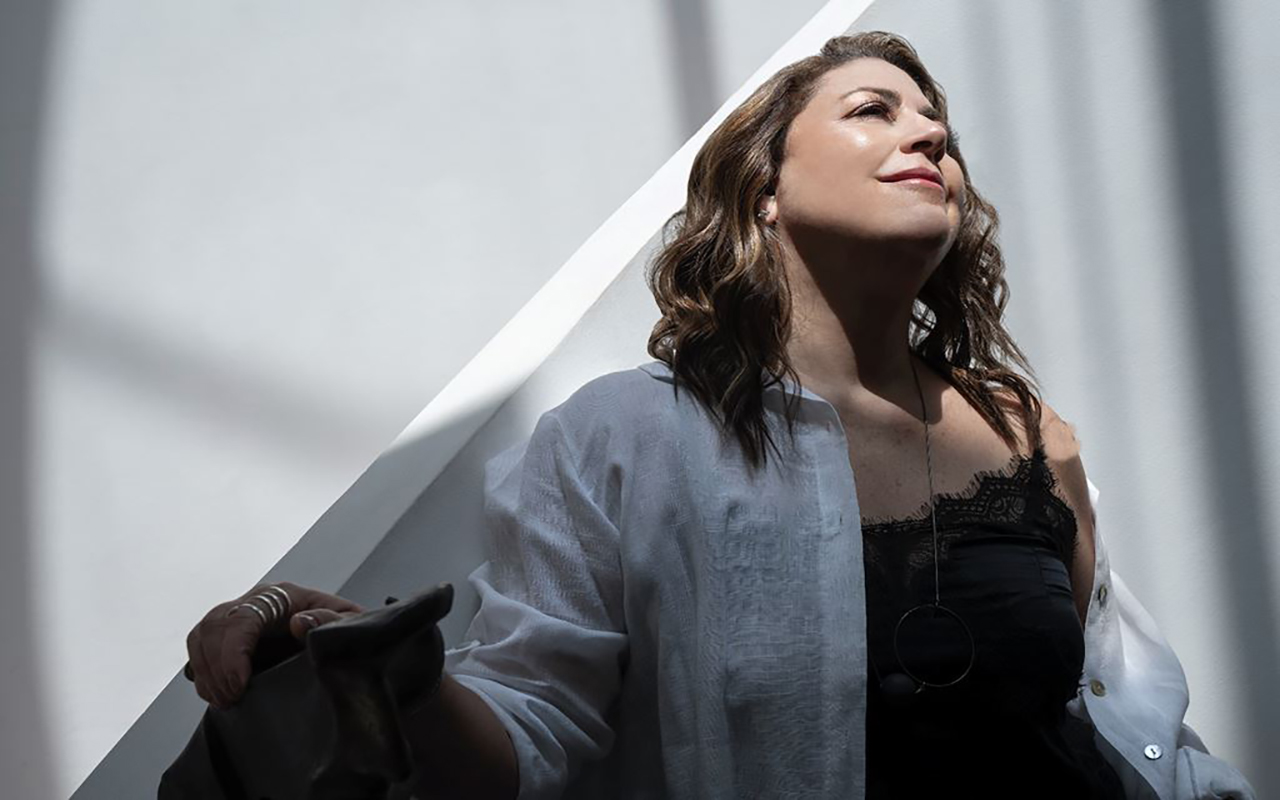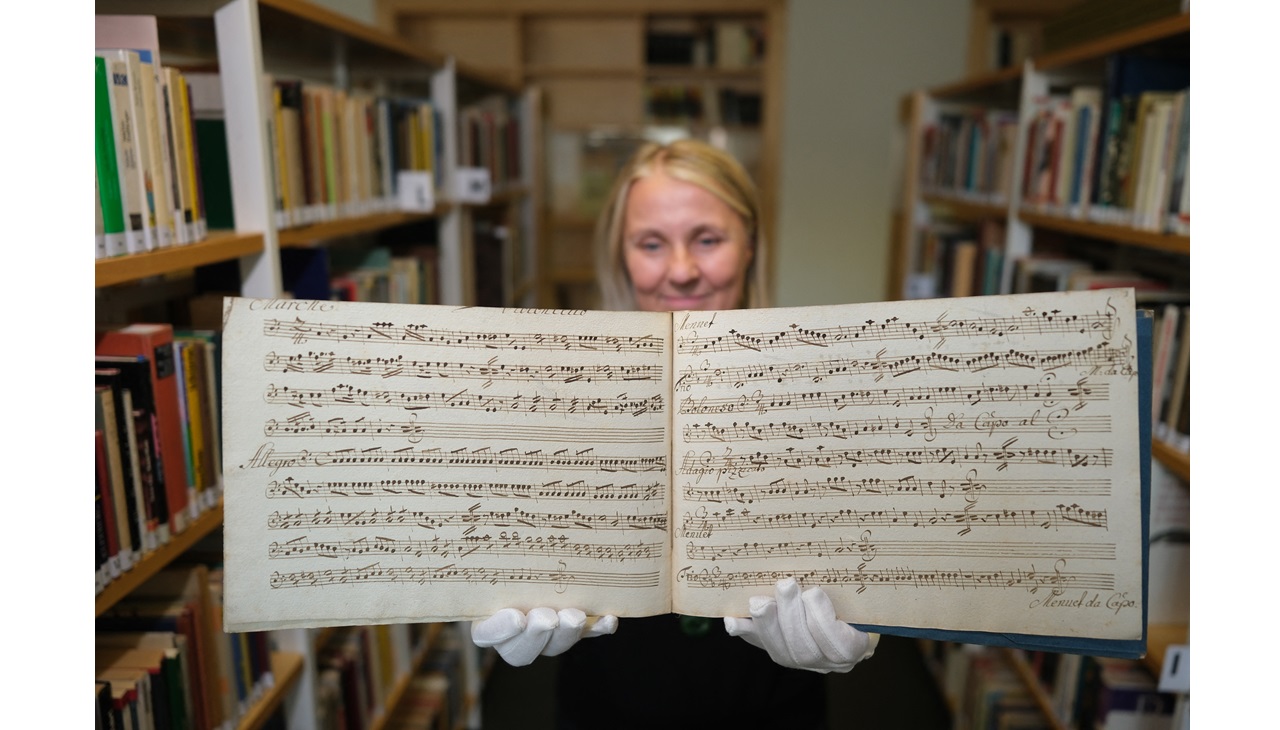
Minas: Music as a bridge between two cultures
While husband and wife Orlando Haddad and Patricia King Haddad met while pursuing bachelor’s degrees in music at the University of North Carolina School of the Arts, the duo—known musically as Minas—began their relationships with music at a young age, and very naturally.
Orlando said that his interest in music started when his father gifted his mother with a piano and she started practicing in the mornings. He would watch his mother play, sparking his interest in music.
“I started memorizing all the music she was playing and really liking it,” Orlando recalled.
He asked his parents if he could take piano lessons. Despite their initial refusal, they eventually allowed Orlando to begin his piano classes at age 5. Since then, he has never stopped playing. Orlando went on to form a band with his friends, playing parties (and getting paid for it).
When it came time to go to college, he followed the footsteps of his father and older brothers by enrolling in medical school, but it didn't take long until he realized that something was wrong... Something was missing.
So Orlando applied and was accepted to the Instituto Villa-Lôbos, a music school named after a Brazilian who was one of the most influential Latin American composers of the 20th century. Despite the name recognition, Orlando wasn’t entirely happy.
“The director was a retired general,” explained Orlando, who began attending the music school in Rio de Janeiro during the military dictatorship. “And he didn't really have sensitivity for the arts. We had some good teachers, I remember, some excellent teachers, but the curriculum wasn’t that great.”
He decided to continue his education abroad, choosing to study in North Carolina, where he would meet Patricia, who was studying classical voice.
Patricia also began playing piano at a very young age, and composing as well. She described one day when she was playing underneath the bed when her mother heard her operatic singing.
“I was probably imitating some opera piece that I heard on a record or something,” Patricia said.
Her mother then took Patricia, who was 7-years-old at the time, to audition in a music theater. She was accepted and started participating in shows. She also had singing classes with the choir director of the church her family frequented. Since then, she has never abandoned music.
While attending college in North Carolina in 1978, Patricia, who had fallen in love with Brazilian music as a teenager, found out that there was a music student from Brazil at her school—Orlando.
Patricia, following her Brazilian influences, approached Orlando and asked him to write lyrics in Portuguese for music she had composed. Their first collaboration became a song called “Num Dia Azul,” which would go on to become the name of their first record.
Their repertoire mixes original songs with renowned Brazilian compositions, such as “Garota de Ipanema,” “Dona Flor,” “Mais que Nada,” and “Águas de Março,” among others. The group also covers Beatles classics such as “Here comes the Sun,” “Come Together,” and “Within You Without You,” which, in Minas’ interpretation, is played acoustically and accompanied by a berimbau—a Brazilian musical instrument used mostly to set rhythms during Capoeira games, a Brazilian martial art.
The musicality of Minas can be interpreted as a perfect chemistry of Brazilian American rhythms such as bossa nova, chôro, samba, jazz, and blues. The style is the result of years of immersion, traveling and studying.
CONTENIDO RELACIONADO
Orlando described a three-month trip throughout Brazil that the couple took, visiting cities such as Rio, Bahia, Minas Gerais and São Paulo. The trip presented them with the opportunity to watch great names of Brazilian music in concert.
“We went to hear Tom Jobim, Vinicius de Moraes and Miúcha, and Toquinho live,” Orlando said, mentioning great names of bossa nova. “Vinicius had his bottle of whiskey… He was drinking his whiskey while he recited his poetry. They told jokes and sang, it was a great show.”
(Vinicius de Moraes was a renowned Brazilian songwriter (among other accomplishments) and was known for his predilection for whiskey.)
After this period in Brazil, Patricia and Orlando returned to the U.S., bringing with them additions to Minas. Coquinho, a childhood friend of Orlando, began playing drums and Rick Heyman, also Orlando’s friend, joined the group on bass. Minas became a quartet, though today Minas consists of only Orlando and Patricia.
With seven recorded albums and several Grammy nominations, Minas is frequently referenced when it comes to the representation of bossa nova in the U.S. Patricia and Orlando make sure to pass their knowledge forward through an educational program they conduct for children.
In the program, called Brazilian Adventure, Orlando and Patricia visit elementary, middle and high schools in Pennsylvania, teaching students about Brazilian culture and history. The couple brings Brazilian musical instruments, immersing students in Brazilian rhythms and even teaching some Portuguese through Brazilian lyrics.
Brazilian Adventure has been happening for more than 25 years and has brought musical and cultural knowledge to more than half a million children.
Grupo Minas will be performing during the cocktail hour of the “I am an American Immigrant” Awards Ceremony on June 14 at the National Museum of American Jewish History. And you can purchase your ticket here










DEJE UN COMENTARIO:
¡Únete a la discusión! Deja un comentario.